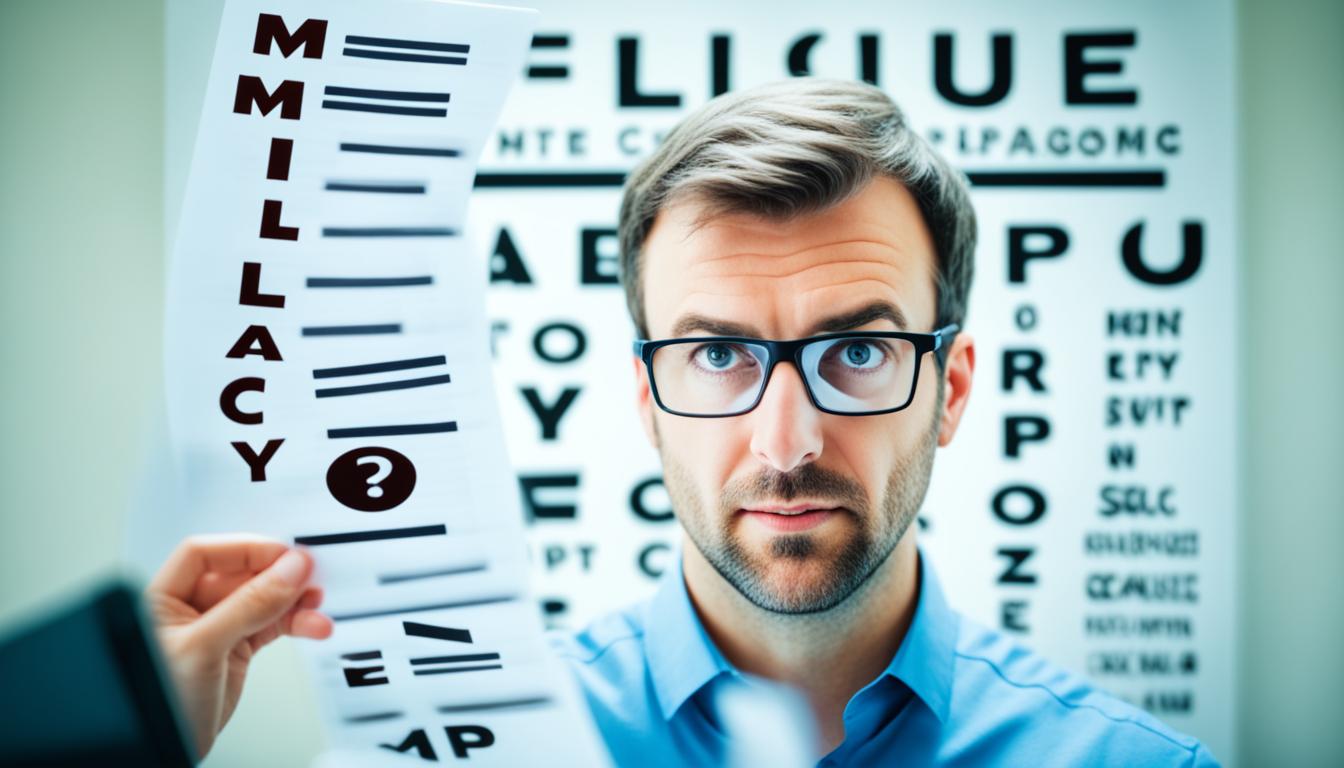Myopia, or nearsightedness, is a global issue affecting many. People with myopia find it hard to see things in the distance but see closer objects clearly. This happens because the eye’s shape makes light focus in front of the retina.
Over the years, myopia cases have significantly increased. In the U.S., for example, cases went from 25 percent to 41.6 percent between 1971 and 2004. By 2050, an estimated 938 million people worldwide will suffer from myopia.
This growth in myopia is a big health concern. It links to serious eye problems like cataracts and retinal detachment. Swift treatment is essential to prevent lasting vision issues
Key Takeaways:
- Myopia, also known as nearsightedness, is a vision problem that affects a large number of people worldwide.
- The prevalence of myopia has been increasing over the years and is projected to affect a significant portion of the global population.
- Untreated myopia can lead to complications such as cataract, glaucoma, retinal detachment, and myopic macular degeneration.
- Treatment options, including prescription glasses and contact lenses, are available to manage myopia.
- Stem cell therapy is an emerging area of research for myopia treatment, but further studies are needed for its effectiveness and safety.
Treatment Options for Myopia
Several treatments for myopia can delay its start or slow it down. Contact lenses are one such treatment. Both soft and rigid gas-permeable lenses are used. Soft lenses don’t significantly affect myopia’s progress but are still a good option for improving vision. However, rigid gas-permeable lenses can help decrease how fast myopia gets worse, especially in kids.
Orthokeratology, or “ortho-k,” is becoming more popular. This non-surgical procedure uses gas-permeable contact lenses worn overnight to reshape the cornea. It corrects vision and can reduce the need for glasses during the day. Orthokeratology is effective in slowing down myopia’s progression.
Another method is refractive undercorrection. It means prescribing glasses or contacts that are a bit weaker than needed. The thought is that it makes the eyes work harder to see. This might slow down how fast myopia gets worse. But, we still need more research to know if this method really works over a long time.
In recent times, drugs like pirenzepine and atropine are being looked into. These drugs can slow the growth of the eye. Thus, they might also slow down myopia’s advance. But, they have side effects and need close eye doctor supervision.
The best treatment changes from person to person, depending on different factors. These include how serious the myopia is, the person’s age and lifestyle, and what the person prefers. It’s very important to talk to a qualified eye care specialist to find the best treatment for you.
| Treatment Options | Effects on Myopia Progression |
|---|---|
| Contact lenses | No significant impact on progression (soft lenses) May help decrease progression (rigid gas-permeable lenses) |
| Orthokeratology | Effectively slows down progression |
| Refractive undercorrection | May have potential in slowing down progression, more research needed |
| Pirenzepine and Atropine | Suppresses elongation of the eye, slows down progression, but may have side effects |
Conclusion
Nearsightedness, or myopia, is becoming more common worldwide. It’s a big health issue. As more people struggle with seeing far, it’s key we look at why and how to reduce its effects.
Some folks are more likely to get myopia because of their genes. But, things we do and our surroundings also matter. Too much time up close, like when reading or on screens, and not enough being outside can make it worse.
Luckily, we have ways to treat myopia. Doctors can offer contact lenses, special overnight lenses, or eye drops. They might also suggest certain eye exercises or even pills. The right choice depends on each person and their eye health.
To fight myopia and its dangers, people need to know more about it. Regular eye checks and healthy eye habits are vital. So is spending time in natural light. These steps can make a real difference.

